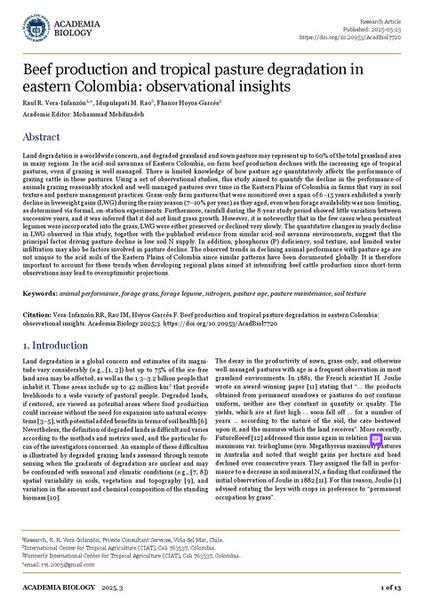
Land degradation is a worldwide concern, and degraded grassland and sown pasture may represent up to 60% of the total grassland area in many regions. In the acid-soil savannas of Eastern Colombia, on-farm beef production declines with the increasing age of tropical pastures, even if grazing is well managed. There is limited knowledge of how pasture age quantitatively affects the performance of grazing cattle in these pastures. Using a set of observational studies, this study aimed to quantify the decline in the performance of animals grazing reasonably stocked and well-managed pastures over time in the Eastern Plains of Colombia in farms that vary in soil texture and pasture management practices. Grass-only farm pastures that were monitored over a span of 6–15 years exhibited a yearly decline in liveweight gains (LWG) during the rainy season (7–10% per year) as they aged, even when forage availability was non-limiting, as determined via formal, on-station experiments. Furthermore, rainfall during the 8-year study period showed little variation between successive years, and it was inferred that it did not limit grass growth. However, it is noteworthy that in the few cases when persistent legumes were incorporated into the grass, LWG were either preserved or declined very slowly. The quantitative changes in yearly decline in LWG observed in this study, together with the published evidence from similar acid-soil savanna environments, suggest that the principal factor driving pasture decline is low soil N supply. In addition, phosphorus (P) deficiency, soil texture, and limited water infiltration may also be factors involved in pasture decline. The observed trends in declining animal performance with pasture age are not unique to the acid soils of the Eastern Plains of Colombia since similar patterns have been documented globally. It is therefore important to account for these trends when developing regional plans aimed at intensifying beef cattle production since short-term observations may lead to overoptimistic projections.

